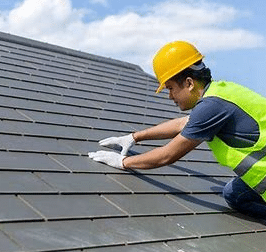
Are you considering replacing your roof but feeling overwhelmed by the pricing variations? You’re not alone. Roof replacement costs can fluctuate significantly, and understanding the factors influencing these fluctuations is crucial for making informed decisions. Whether you’re dealing with storm damage, wear and tear, or simply upgrading for aesthetics and energy efficiency, delving into the intricacies of roof replacement pricing can save you time, money, and headaches down the road. In this comprehensive guide, we’ll unravel the mysteries behind the price tags and shed light on the key factors that affect the cost of roof replacement.
Roof Size and Complexity
It goes without saying that the size and complexity of your roof play a significant role in determining the replacement cost. A larger roof requires more materials and labor, driving up the overall expenses. Moreover, roofs with intricate designs, multiple angles, and unique features like skylights or chimneys demand extra attention and expertise from roofing contractor, which can translate to higher costs.
Material Selection
The choice of roofing materials is another crucial determinant of replacement costs. From economical asphalt shingles to premium options like metal, tile, or slate, each material comes with its price tag. While asphalt shingles remain the most popular and affordable option for many homeowners, investing in high-quality, durable materials can offer long-term savings by reducing maintenance and replacement frequency. Discussing the pros and cons of different materials with your roofing contractor can help you make an informed decision that aligns with your budget and preferences.
Labor Costs and Local Market Factors
Labor expenses constitute a significant portion of the total roof replacement cost. Factors such as labor availability, market demand, and local wages can vary from region to region, influencing pricing disparities. Additionally, the expertise and reputation of the roofing contractor you choose can impact labor costs. While opting for a budget-friendly contractor may seem appealing initially, it’s essential to prioritize quality and reliability to avoid potential issues and additional expenses in the future.
Roof Accessibility and Safety Measures
Accessibility challenges and safety considerations can also affect the price of roof replacement. If your property has limited access or requires special equipment like cranes or scaffolding, expect additional costs to accommodate these requirements. Moreover, ensuring compliance with safety regulations and implementing proper safety measures adds to the overall project expenses but is indispensable for protecting both workers and property during the replacement process.
Underlayment and Ventilation Systems
Often overlooked but crucial components of a roofing system, underlayment, and ventilation play a vital role in preserving the integrity and longevity of your new roof. Investing in high-quality underlayment materials and efficient ventilation systems may incur initial costs but can yield substantial savings by preventing moisture damage, mold growth, and premature deterioration. Discussing these options with your roofing contractor and prioritizing proper installation can enhance the overall performance and lifespan of your roof.
Additional Services and Upgrades
Beyond basic roof replacement, additional services and upgrades can further impact the final cost. Factors such as removing existing layers of roofing, repairing underlying structural damage, or installing new features like solar panels or gutter systems can contribute to the overall expenses. While these enhancements may increase upfront costs, they can offer long-term benefits in terms of energy efficiency, functionality, and property value.
Warranty Coverage and Insurance Considerations
When evaluating roof replacement costs, don’t overlook the value of warranty coverage and insurance considerations. Opting for roofing materials with extensive warranty protection and hiring contractors offering comprehensive workmanship warranties can provide peace of mind and financial protection against potential defects or issues down the road. Additionally, consulting with your insurance provider to understand coverage options and potential reimbursement for roof replacement due to damage or wear and tear can help mitigate costs.
In Conclusion
The price of roof replacement is influenced by a myriad of factors, ranging from roof size and material selection to labor costs, accessibility challenges, and additional services. By understanding these factors and collaborating closely with experienced roofing contractors, you can navigate the complexities of roof replacement pricing more confidently and make informed decisions that align with your budget, needs, and long-term goals. Remember, investing in quality materials, expert craftsmanship, and proper maintenance can yield significant returns in terms of durability, performance, and overall satisfaction with your new roof.